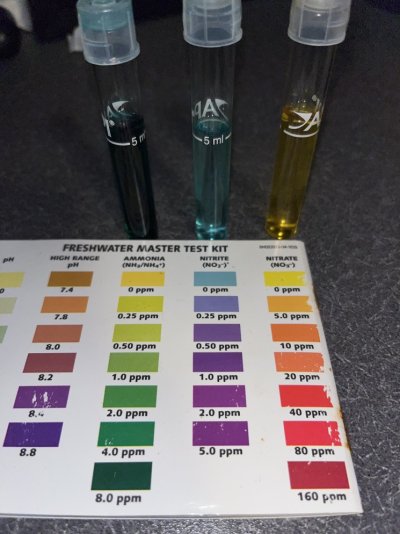Fish in cycling was all that we did "back in the day" so it's not a hard thing to do but it is a timely thing. In order to be cycled, you need to see the ammonia rise then fall, the nitrites rise and fall and the creation of nitrates that are rising.
What items like Quick Start do is put the 2 bacteria/microbes in the tank that convert ammonia into nitrite and nitrite into nitrate. As long as you are not getting nitrates from your source water and you ARE seeing nitrates in your test results, you have the 2 bacteria/microbes in the tank doing their " thing"


Here's what you need to know: These microbes ( called the biological filter bed) grow and shrink to the amount of ammonia present. That means that if your fish are creating X amount of ammonia and you added enough microbes to handle XYZ amount of ammonia, the biological filter bed will shrink and only enough microbes will survive to handle the X amount of ammonia. Since you only have the one( or 2) fish, it's not creating a lot of ammonia so the biological filter bed is going to be small. That means when you are sure you are cycled ( meaning you have no ammonia and no nitrites but do have nitrates that are not coming from your source water), your tank is " cycled' for that 1 or 2 fish only. Here's the good news, these microbes multiply rather quickly so you are not stuck with just these 1 or 2 fish.

But you do need to add more fish in small quantities so that you do not overload the biological filter bed which would cause a " recycling" of the tank for the larger amount of fish load.
( That's actually the short answer.

)
So what I would do is when you add more fish, even just 1 or 2 fish, add more of the quick Start if you have any left. If not, after adding new fish, test your ammonia the day after you added the fish. If you see a rise, that means the biological filter bed has not caught up to the amount of ammonia being produced. Continue the daily ammonia test to make sure the level does not get to above .5 ppm. If it does get that high, do a partial water change to reduce the amount of ammonia and don't add any more fish for a while ( at least a couple of weeks or more).
One last thing about these " bacteria in a bottle", they have a shelf life. The closer you get to the use by date, the less live bacteria will be in the bottle. Do not use outdated or close to outdated product. Water changes are the better option.
------------------------------------------------------------------------------------
(Now that I looked at your picture ......

)
If I read your picture correctly ( color images will vary from computer to computer) You have high ammonia and no nitrite or nitrate. That means the quick start you were using was not live product. If that is correct, you can throw out whatever you have left of it as it's not live. The only " Bacteria in a bottle" I've found to be effective is Fritzyme #7 by Fritz Aquatics. If you want to go that route, do a partial water change daily until you get the Fritzyme. If you want to just do it naturally, be prepared for it to take a few months for the tank to cycle. You will need to be doing partial water changes at least 2 times per week based on the ammonia level. ( It may only be once a week or 3 times a week all based on the ammonia level. ) The last thing you need to do a fish in cycle is patience. It takes time for it to happen naturally....but it always happens as long as the water parameters are correct.

So now you know what you need to have and what you apparently do not have. .

Hope this helps.


